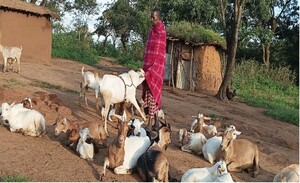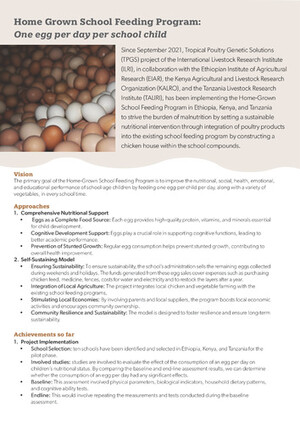
Live weight, conformation, carcass traits and economic values of ram lambs of Red Maasai and Dorper sheep and their crosses
Abstract
Meat production is the most important trait in the breeding objectives of sheep production in East Africa. The aim of this study was to investigate breed differences in live weight, conformation, carcass traits and economic values for meat production among Red Maasai and Dorper sheep and their crosses. In total, 88 ram lambs, which were reared at the ILRI experimental station, Kapiti plains Estate in Central Kenya, were used for the study. The lambs were slaughtered at Kenya Meat Commission (KMC) at about 1 year of age. Prior to slaughter, the lambs were weighed, measured and assessed by experienced evaluators, and at the abattoir carcass traits were recorded. Large breed differences were found for most traits. Dorper lambs were heavier at delivery for slaughter and had better carcass grade but lower dressing percentage and fat levels than Red Maasai. Crossbreds were generally better than the parental breeds. Evaluators were willing to pay more for the Dorper lambs for slaughter although carcass weights later were shown not to be higher than for Red Maasai. Evaluators undervalued Red Maasai lambs by 8–13 % compared to Dorper lambs according to the prices quoted per kilogramme live or carcass weight by KMC. Live weight was better than any other live measure in predicting carcass weight. Due to the overall higher ranking of the crossbred lambs for meat production, Dorper may be useful as a terminal sire breed for crossing with Red Maasai ewes.
Citation
Konig, E. Z., Ojango, J.M.K., Audho, J., Mirkena, T., Strandberg, E., Okeyo, A.M. and Philipsson, J. 2016. Live weight, conformation, carcass traits and economic values of ram lambs of Red Maasai and Dorper sheep and their crosses. Tropical Animal Health and Production










